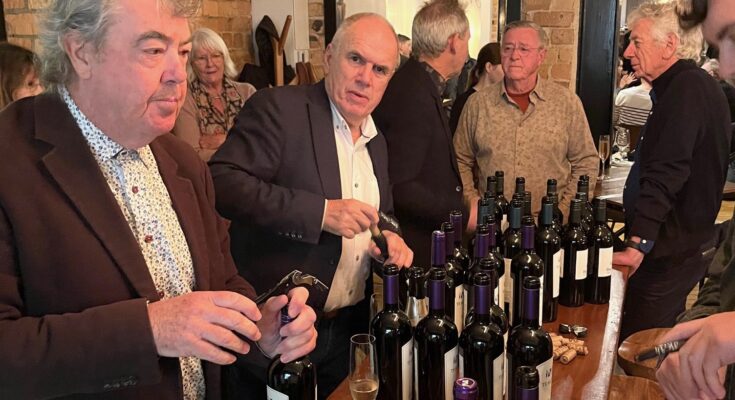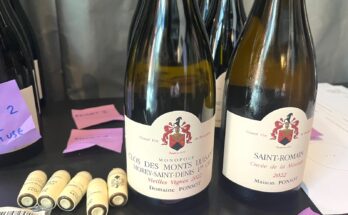I do love the chance to brighten up a winter night by tasting some fabulous wines, and couldn’t pass up a ticket to Vic Road Kitchen in Devonport, who were putting on a five course degustation menu where each course featured Aura wagyu beef alongside award-winning wines from Waiheke pioneers Te Motu. That’s got to be worth venturing out for on a cold Thursday evening.
The team cooking at Vic Road Kitchen can produce some inspired tastes and creative combinations – the equal of any kitchen in Auckland. And a night like this, matching flavours to top quality wines, using amazing ingredients like the Aura wagyu, really allows them to flex some culinary muscle. Never shown better than in the first two courses, where a tiny peekaboo pear is smeared with horseradish, wrapped in home-made brasola and topped with radish and watercress; or an entree of tartare with radicchio, spiked with tonnata sauce, anchovy and dense focaccia for mopping it all up. Food of the highest standard, and deserving of wider recognition, I’d wager.
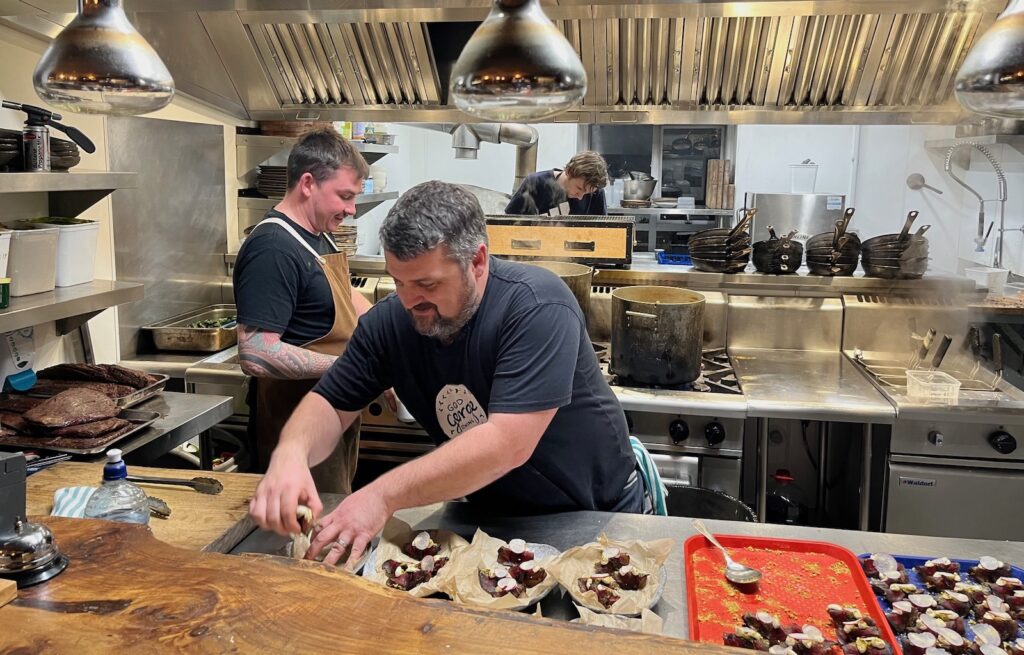
Not all the wines coming from Te Motu are Bordeaux reds. They also do a range that isn’t labelled as ‘Te Motu’ We start with a rosé – Dunleavy The Shed Rosé 2021. They aim for the dry expressions of Provence, using 100% Merlot grapes grown in a beautiful sun-drenched vineyard in Awaawaroa Bay, near the eastern end of Waiheke Island. I found this to be very much my style of rosé – dry, yes… but with a freshness and plenty of red fruits. Acidity needs to be crisp and juicy – this is; and there’s enough phenolic nip and tannin to give a lovely mouthfeel, structure and texture. It was served with that amuse bouche of pear and brasola. It set the room talking – quite the entrance.
I hadn’t tried their next wine – Dunleavy ‘The Family’ Merlot-Cabernet 2017 – Paul Dunleavy tells me it is usually only available at the Cellar Door in the Onetangi Valley on Waiheke Island. A deep purple colour with sumptuous Merlot-typical aromas and flavours into the palate. A youthful exhuberance and fruit-forward style coping with the array of flavours on the plate – the tartare also having anchovy, salmon roe and tonnata sauce to contend with. Generous and punchy – both on the plate and in the glass.
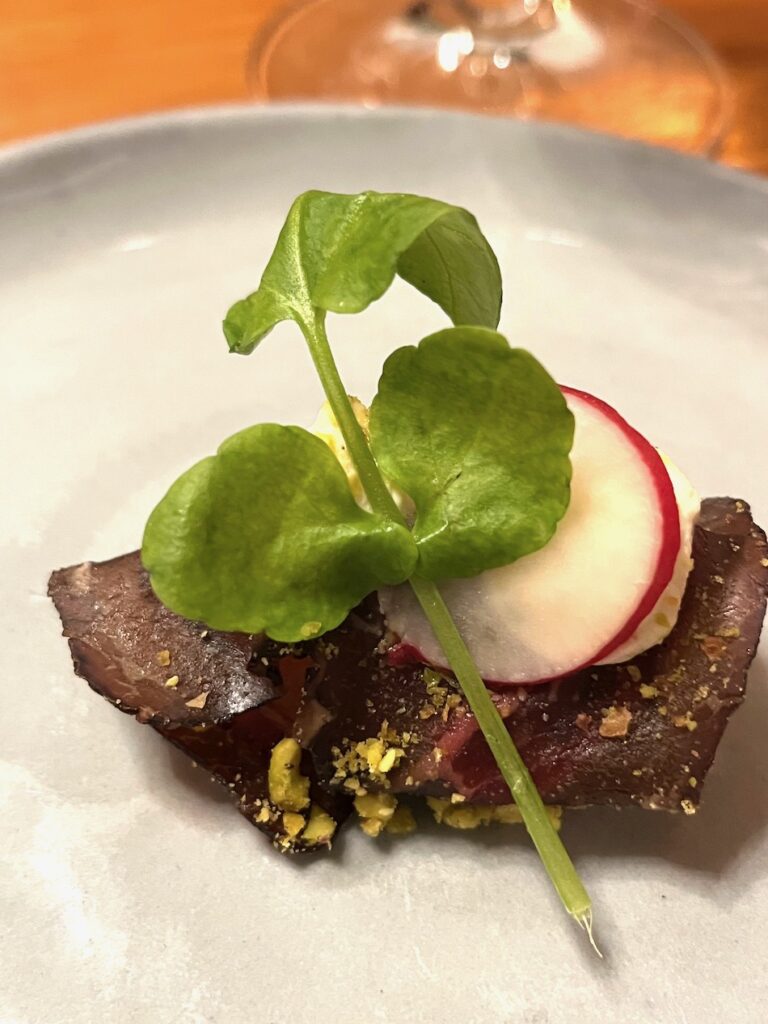
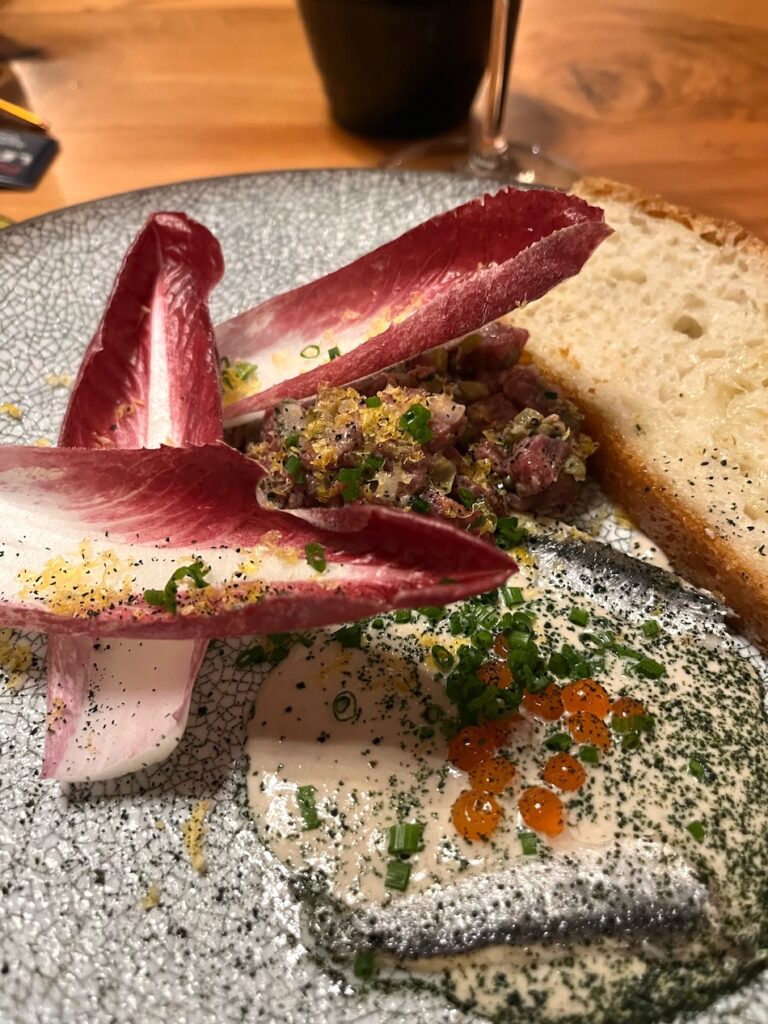
I have tasted (and liked) Dunleavy ‘The Strip’ Cabernet-Merlot 2018 before. Intensely aromatic – leaping out of the glass. Ripe, juicy and potent, with boysenberry, blackcurrant, old leather, eucalypt, vanilla and doris plum, with a lift of floral rose and cherry blossom. Accessible and broad, with a core of succulent fruit, braced with toasty oak and carried along on a breeze of fresh acidity. Tannins are nicely integrated and svelte – it is a lovely harmonious drop with hardly a hair out of place. The pasta that this was served to us as the wine was poured was quite magnificent. A chunk of slow-cooked wagyu brisket was enfolded by a square of silky pasta, and the aroma of deep, meaty juices was robust and satisfying as it landed on the table. Simple flavours presented with panache and verve – the first three dishes were just superb, and heightened the enjoyment of the juicy wine.
Introductions from Paul Dunleavy, plus the family member who has now been handed the baton – Paul’s son Rory Dunleavy – peppered the courses and wines, but we also got to hear from the supplier of this top-quality beef. Plus the new distributor of Te Motu wines – Daniel Kemp was on hand to give his thoughts on his long relationship with the Dunleavy family and the wines. Owner Harriet Byrnes of the Vic Road Kitchen spoke on behalf of chef/husband Ian Byrnes as well. All kept the interludes brief, entertaining and educational.
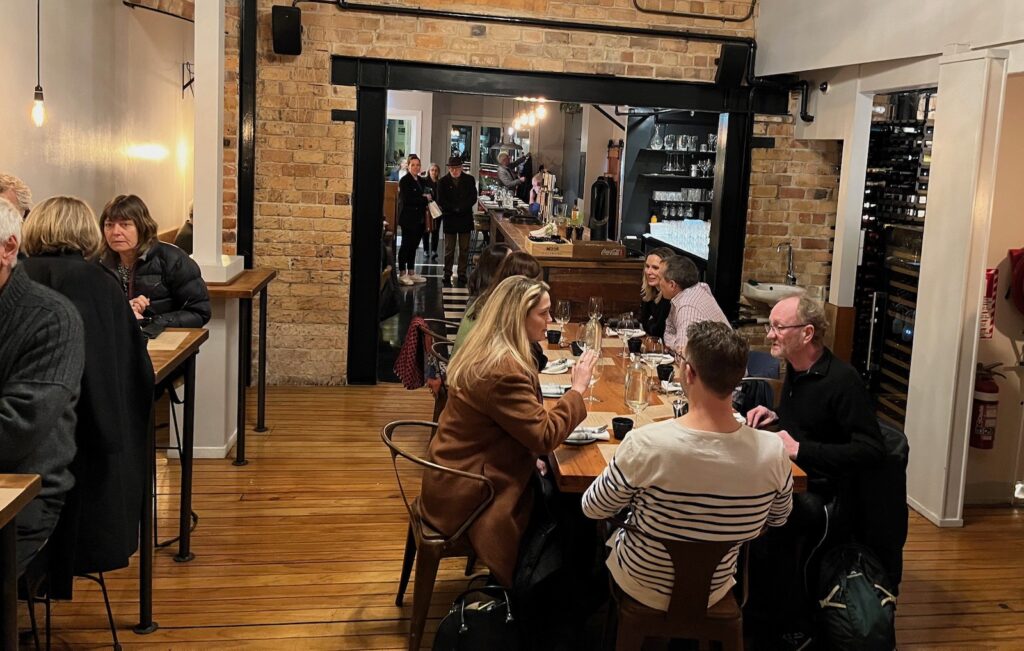
As we move into the Te Motu wines, the menu switches a little more traditional – possibly in deference to the wines? I’m not sure, but we get a sensational bavette dish – with a very clever twist on their ‘no waste’ ethos where the broccoli puree on the plate is accompanied by a grilled slice of what looks like courgette, but is, of course, the broccoli stalk (the tastiest bit). Te Motu Kokoro 2019 is named for the head of Te Motu’s founding family, Terry Dunleavy, who passed away quite recently. Kokoro means ‘the patriarch’ in Maori and ‘the heart of things’ in Japanese. Another Merlot-dominant blend with the Cabernet Sauvignon, Malbec and Syrah in supporting roles. It is certainly a more fruit-forward style than the Te Motu flagship wine, showcasing ripeness and texture, but also a step up from the Dunleavy range. A medium-bodied palate that is quite firm and taut, but with buoyant acidity and some fine, supple tannin. Notes of white pepper and vanilla lift the ripe red berry fruits.
We finish on two vintages of Te Motu – the first served with the icon cut of Wagyu fillet (graded 9.1) as befits the icon wine – Te Motu 2019. Daniel Kemp reckoned this vintage (from a dream growing year) could be “their best wine yet” and I do tend to agree – more on that later. The flagship is a Cabernet Sauvignon dominant blend with Merlot and Cabernet Franc filling in the gaps. Built to last – it has extended élevage and maturing in French oak before spending a minimum 3 year term resting in bottle before release. The varietal personality presents beautifully, with crisp dark fruit in a synergy of flavour and textures. A pure acidity and fine, exquisite tannins give such confidence and poise to the palate. A nod to the Old World perhaps, but with modernity and style aplenty.
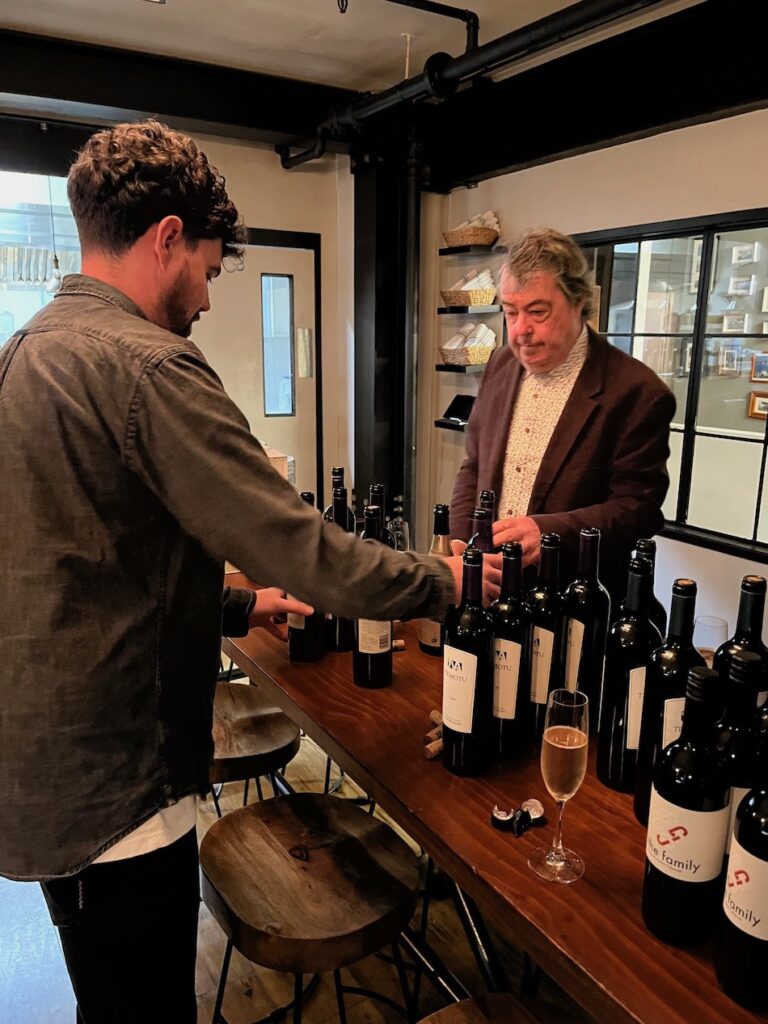
I’d been the guinea pig for the ‘meat dessert’ that Chef Ian had been planning and seen it in various stages of assembly – from a bone barrow creme anglaise, to a near-complete dish that elicited this response “smells like roast dinner – looks like dessert”. I half-suggested it just needed a yorkshire pudding to cap it off. Tonight’s finished product was magnificent – imagine a cross between Banofee Pie and a Sunday Roast. With Yorkshire Pudding. Probably the dish of the day. To go with this was Te Motu 2009 – a ten year-older rendition. It has less flamboyance than the 2019, with a quieter voice. More savoury through the palate – liquorice, leather and some ‘forest floor’ earthiness to counter the blackcurrant and dark cherry fruit flavours. One voice around the table found a little too ‘funky’ for them, but I thought the balance and elegance outweighed that gamey note.
For most, this was the finale – in fact I know that a couple of groups left without eating the dessert as they “couldn’t eat another thing”. Portions are generous here! But an invite ‘to the back room’ was accepted, and after chatting to Rory, I was happy to try both a Te Motu 1999, and a special bottle (one of only 300 or so) of Te Motu Tipua 2019. Rory tells me “In Maori legend, Tipua is a shape-shifter. The Tipua wine is only made in an exceptional vintage and only then when one variety from that vintage really shines”. A single barrel’s worth was made with fruit from a parcel of 30 year old Cabernet Sauvignon vines, that, when tasted individually, was decided that it just “had to be” bottled separately – a unique wine – 100% Cabernet Sauvignon. It is quite special – the purity of that varietal expression is intense and clear from the nose to the finish. A singular vision of great personality.
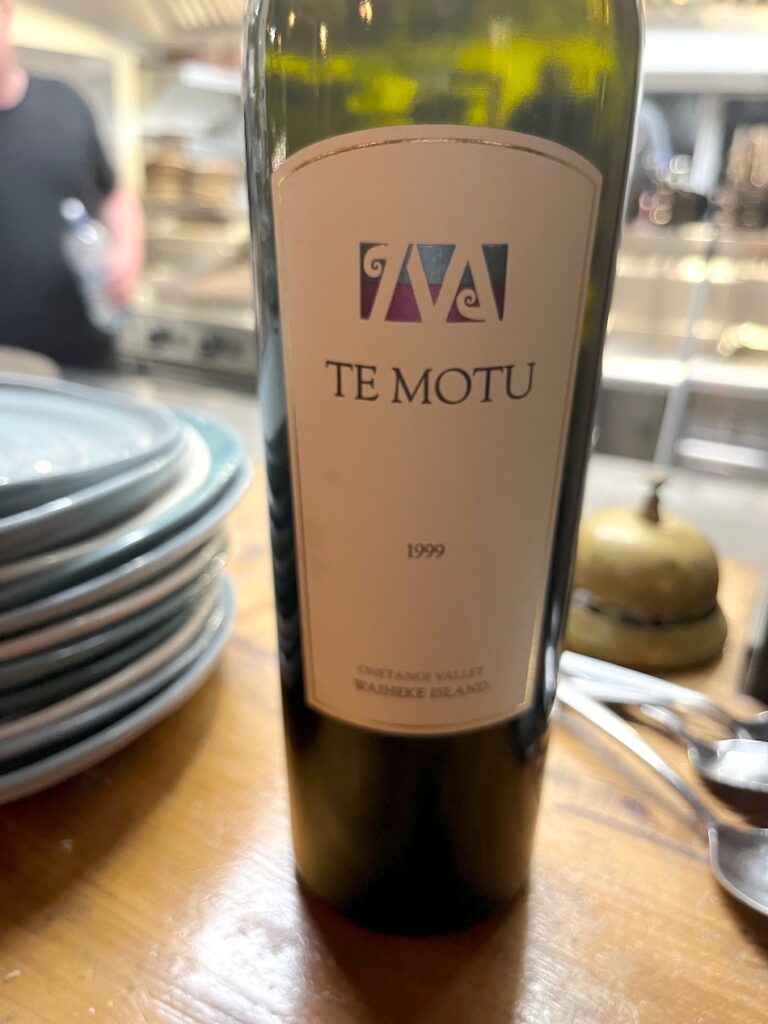
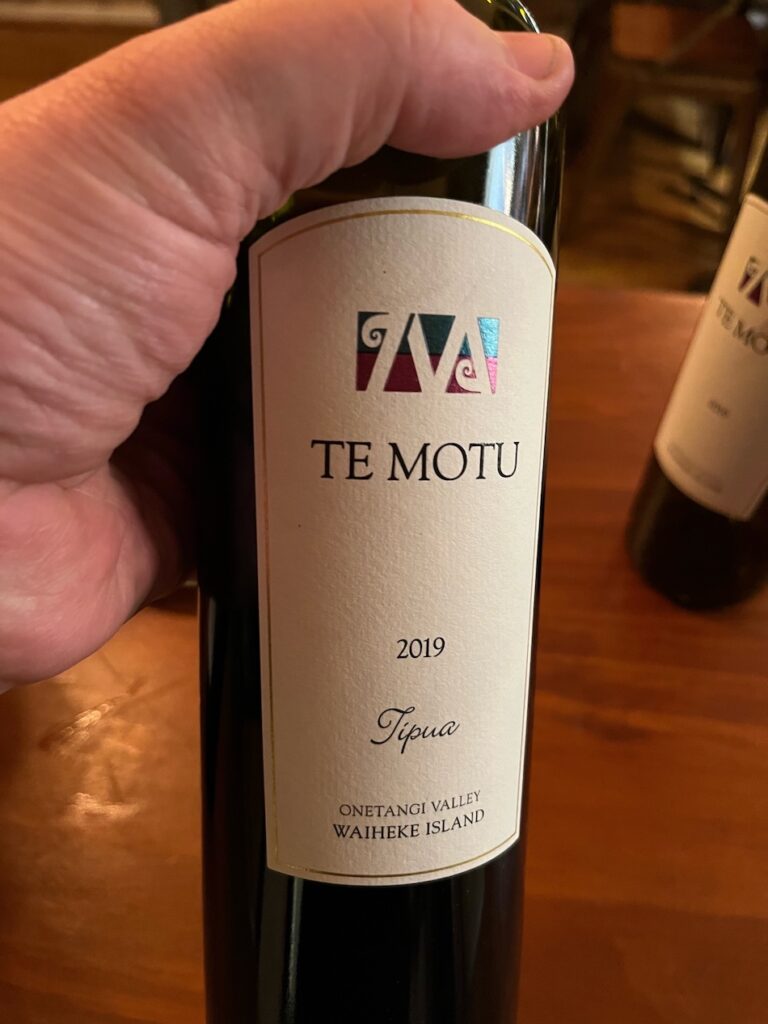
Going to back to an earlier theme – as a commentator on wine, it simply isn’t possible for me to be at these events and not get asked questions such as “I’m thinking of buying a couple – which vintages would you buy?” Now, a get-out clause is that ‘my taste won’t be your taste’… but I am honest to a fault, and will give an opinion – what you might think of that is up to you. For me, on reflection, the new wine from 2019 just shows too much panache and brio to ignore. Of course, it is of huge value to taste a 2009 and then a 1999 – to compare what might happen when the wine ages. And I see a lineage through those Te Motu vintages that is well-defined and gives clarity on the potential. But. If you like that, take another think about the 2019 and tell me that it doesn’t have the potential to be better? Look at the older wines, and using that knowledge, try to consider what could happen to that remarkable young wine. To me, the answer is – buy the 2019 (if you have the time and patience to age it).

